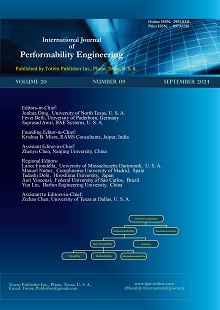-
Enhancing Software Fault Prediction using Machine Learning
- Manu Banga
-
2024, 20(9):
529-540.
doi:10.23940/ijpe.24.09.p1.529540
-
 Abstract
Abstract
 PDF (787KB)
PDF (787KB)

-
References |
Related Articles
Ensuring software reliability before public release is crucial, as most issues stem from human errors during development. Addressing these early through integrated testing resources can mitigate potential problems. This paper proposes an enhanced software fault prediction model using a meta-heuristic optimization technique. Our approach utilizes NASA’s datasets, incorporating data cleaning, feature dimensional reduction, and software fault prediction (SFP). The Extreme Learning Machine (ELM) parameters, such as weights and biases, were optimally determined using the improved particle swarm optimization (IMPSO) method. Model validation employed various metrics, including accuracy, sensitivity, specificity, F1 score, and MCC, through a 10 × 5 cross-validation. The model, named PCALDA+IMPSO-ELM, was tested on NASA datasets (CM1, KC2, KC3, MC1, and PC1), achieving prediction accuracies of 0.9696, 0.9836, 0.9482, 0.9799, and 0.9644, respectively. The findings demonstrate significant promise for the meta-heuristic optimization technique in software fault prediction with reduced feature sets, offering an effective method to enhance software reliability and anticipate fault-prone modules.

